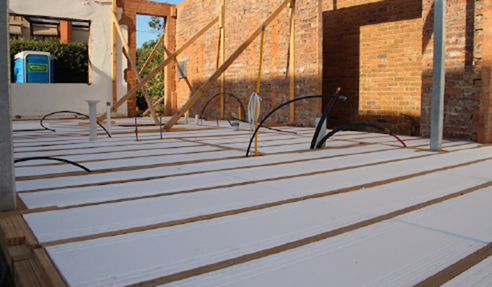Expanded Polystyrene Foam Environmental Facts by Foamex

Many are unaware that expanded polystyrene foam has several environmental benefits. Knowing how the materials of everyday life impact the environment is important, especially if the goal is to reduce the carbon footprint and preserve the environment for future generations.
Sustainability of Expanded Polystyrene Foam
Expanded polystyrene or EPS is a derivative of polystyrene. EPS is a lightweight, rigid closed cellular material, capable of saving energy and resources for many applications, such as packaging, insulation, and building construction.
Expanded polystyrene foam is manufactured using only 0 to 1% of global crude oil. This value is significantly lower as compared to other products that consume 96% of fossil fuels. However little amount of oil is used in making EPS; it's still able to accomplish 200 times its resource regarding thermal energy savings.
EPS' lightweight composition results in lower fuel consumption. When compared to other packaging materials, EPS incurs considerable transport savings of up to 93%. EPS is also capable of retaining product integrity or preserving the nutritional value of food or produce; therefore reducing the amount of food spoilage or rejected products.
Using EPS' lightweight feature for building construction accounts for easy handling and faster installation time. It provides outstanding thermal insulation and durability that will last throughout the lifetime of the application in which it is used.

Heavy consumption of fossil fuels for insulation of residences and commercial properties are the biggest contributor of carbon dioxide emission. An efficient thermal insulation plays a significant role in reducing carbon footprint to slow down the growth of global warming.
Residential and commercial structures can cut down 50% of carbon dioxide emission when expanded polystyrene foam is used for thermal insulation. For every kilogramme of oil used in manufacturing EPS insulation boards, it saves 150kg of crude oil used for heating office buildings and homes.
Manufacturing of Expanded Polystyrene Foam
Contrary to its reputation, Foamex's EPS doesn't contain harmful materials, such as CFCs and HCFCs that harm the ozone layer. EPS goes through a steaming process where a little amount of pentane is used to expand grains of styrene, EPS' building block. Pentane is used in replacement of greenhouse gases HCFCs and CFCs to minimise damaging effects on the ozone layer.
EPS is highly recyclable and accountable for using comparatively little energy during production.
Foamex manufactures a full spectrum of expanded and extruded polystyrene for building construction, protective packaging, architectural profiles, storage and insulation.
Visit Foamex's website at www.foamex.com.au or call 02 9773 1655 for more details on sustainable expanded polystyrene foam and applications today.

|





 Waffle Pod Void Formers - Diamond Pod by
Waffle Pod Void Formers - Diamond Pod by Polystyrene Foam Blocks for Cool Rooms
Polystyrene Foam Blocks for Cool Rooms Benefits of Recycling Polystyrene Foam
Benefits of Recycling Polystyrene Foam Oversized EPS Foam for Event Props by
Oversized EPS Foam for Event Props by Versatile Polystyrene Sheets Melbourne
Versatile Polystyrene Sheets Melbourne Lightweight Foam Blocks for Sustainable
Lightweight Foam Blocks for Sustainable Polystyrene Underfloor Insulation Sydney
Polystyrene Underfloor Insulation Sydney Robust Polystyrene Blocks for Tunnel
Robust Polystyrene Blocks for Tunnel XPS Slab Edge Insulation for Residential
XPS Slab Edge Insulation for Residential Foam Insulation to Lower Your Carbon
Foam Insulation to Lower Your Carbon Reduce Energy Bills with Rigid
Reduce Energy Bills with Rigid Polystyrene Waste Disposal Guidelines by
Polystyrene Waste Disposal Guidelines by EPS Foam Insulation for Garage Doors
EPS Foam Insulation for Garage Doors Superior Underfloor Insulation for Wood
Superior Underfloor Insulation for Wood XPS Insulation for Energy Efficient
XPS Insulation for Energy Efficient Extruded Polystyrene Foam for
Extruded Polystyrene Foam for Trust Foamex for Polystyrene Foam Block
Trust Foamex for Polystyrene Foam Block Waffle Pod Slabs for Sustainable Homes
Waffle Pod Slabs for Sustainable Homes Polystyrene Foam Packaging for Shipping
Polystyrene Foam Packaging for Shipping Foam Insulation for Draught-free Home by
Foam Insulation for Draught-free Home by
